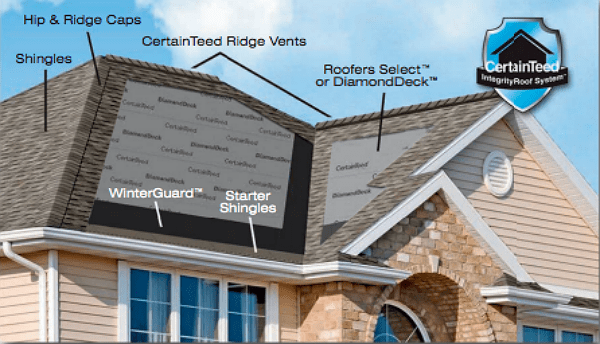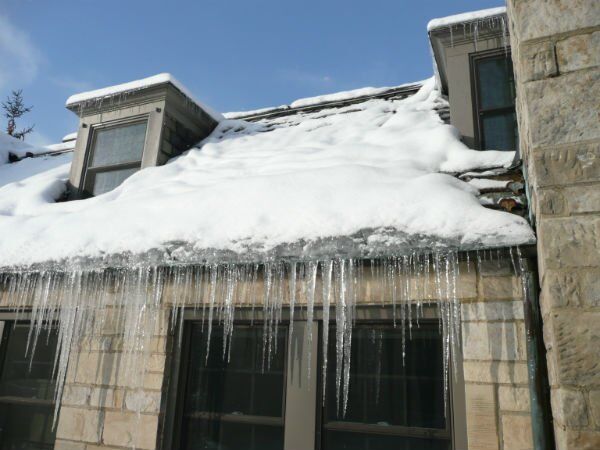3 Reasons Why Roof Ventilation is Important for Your Home
Published on Tuesday April 11, 2017You probably already know the basics of ventilation. Ventilation is the flow of air through a system of intake and exhaust. Ventilation is important because it extends the life of your roof, reduces energy costs, and reduces indoor temperature extremes.
The need for roof ventilation wasn’t documented until the early- to mid-20th century.
That’s when organizations like the American Society of Heating, Refrigerating & Air-Conditioning Engineers (formerly ASHVE) and Forest Products Laboratory recognized that building condensation problems could be caused by poor roof ventilation.
Now we’ll take a more in-depth look at how ventilation works for your home.
How do roof vents work?
Proper roof ventilation in your attic works by allowing air to flow through the attic, which prevents it from becoming overheated and causing moisture. Ventilation only works when air flows. There are two primary methods to create air flow within an attic: mechanical and natural.
- Mechanical. Requires a power source.
- Natural. Whenever possible, natural roof ventilation is used. The stack effect and the wind effect work together to naturally circulate air.
The stack effect occurs when hot air rises and creates a higher pressure at high points in the attic. Hot air that escapes is known as exhaust. However, this hot air cannot escape without an inlet for cooler, low-pressure air. Cool air that enters is referred to as intake.
When the wind blows against the outside of a roof and increases the volume of intake and exhaust, it is known as the wind effect. Intake and exhaust generate the natural flow of air to create a well-vented attic.
This video further explains how roof ventilation works:
Roof ventilation at work
Roof ventilation systems are unique to every home. Factors such as code requirements, regional climate and roof and ceiling designs all need to be considered when venting your roof.
There are two main types of roof ventilation:
- Exhaust vents
- Intake vents
Exhaust vents: These vents allow exhaust to escape.
The most common type of exhaust vents are ridge vents. They are installed at the intersection of two roof planes (known as ridges). They are typically made of molded, high-impact copolymer and are installed underneath a final layer of shingles to give a seamless look to the roof. To the untrained eye, ridge vents can be almost invisible.
Roof louvers, gable louvers, wind turbines and power attic ventilators are all visible exhaust vents that are mounted on the outside of your roof. Like ridge vents, roof louvers and gable louvers work without the use of electricity.
Wind turbines also work without a power source, but they work best with a constant source of wind and are not as effective as ridge vents.
Power attic ventilators, which run on a power source, are an exhaust vent option for certain roof designs or areas without much wind.
Intake vents: These vents can be even harder to spot.
Like the ridge vents, edge vents are also made of a copolymer material. Located at the edges of the roof, these intake vents can be installed at the eaves under the soffit, at the drip edge, or under the shingles at the roof’s edge. The intake vents work with ridge vents to allow cool air to enter the attic space, forcing warm air to exit through the ridge vents.
Now that we’ve reviewed how ventilation works and how a roof can be properly vented, let’s expand on the benefits of roof ventilation.
3 benefits of roof ventilation
Roof vents are important because they extend the life of your roof, reduce energy costs, and reduce indoor temperature extremes. They also prevent damage to your shingles and prevent them from cracking.
1. Extends the life of your roof
Have you ever seen icicles build up on the edges of roofs and gutters? This ice buildup is known as ice damming. You can see the icicles, but you can’t see the damage that they’re doing to the edge of your roof.
Ice damming happens when heat from inside your attic combines with heat from the sun to melt snow and ice on your warm roof. When the resulting water runs to the edge of the roof, it begins to refreeze. As the ice and water build up at the edges of your roof, it can back up behind/underneath the roofing materials, causing damage to your whole roof system, your attic and even inside the walls of your home.
Proper ventilation helps this warm air escape before it has a chance to melt the snow and ice on your roof. A well-vented roof is easy to see in the winter months. It still has snow on the roof, but not an icicle in sight.
This video shows how a well-vented roof protects your roof from ice damming:
Ventilation benefits a roof when it’s hot outside as well. When the temperature outside rises, the temperature on your roof can be nearly double. A hot roof over a poorly vented attic translates into a very hot attic.
Why? Unventilated or poorly ventilated attics don’t have an escape route for the heat that builds up. This buildup of heat can damage your shingles from the inside out. An evenly vented roof will allow the hot air to escape keeping your roof and attic cooler.
2. Reduces energy costs
When the temperature increases outside, we all want to stay cool inside. A properly vented roof allows heat to escape, thereby reducing the workload on your air conditioner. This one is simple: an air conditioner that’s running less means a lower electric bill.
3. Reduces indoor temperature extremes
Have you ever walked upstairs and thought it was at least 10 degrees warmer than it was in your living room? Those who live in ranch-style homes may also notice that although the room doesn’t feel cool, your feet are as cold as ice.
These indoor temperature extremes are often the result of poorly vented roofs. Once your roof is adequately vented to allow the hot air to escape and the cool air to enter the attic space, your home will be more comfortable year-round.
How many roof vents do you need?
Your roofing contractor can provide the exact number of roof vents needed for your particular roof, but the rule of thumb is one vent for every 300 square feet if there is a vapor barrier in the attic. If there is not a vapor barrier, it is recommended to have one for every 150 square feet.
How we can help you vent
Long Roofing incorporates the best roof ventilation techniques on the market today. Recognized by the Asphalt Roofing Manufacturers Association, a CertainTeed roof ventilation system, as part of a whole roof system installed by Long Roofing, will have you on your way to reaping the benefits of a well-vented roof for 50 years or more.
Need a new roof?
It may be time to replace your roof. Long Roofing builds trust and peace of mind into every Long Roofing roof.
Interested in a 50-year warranty? Let’s talk. Contact our roofing team online for more information.
Interested in Long Home Products?
See our special offers now.











